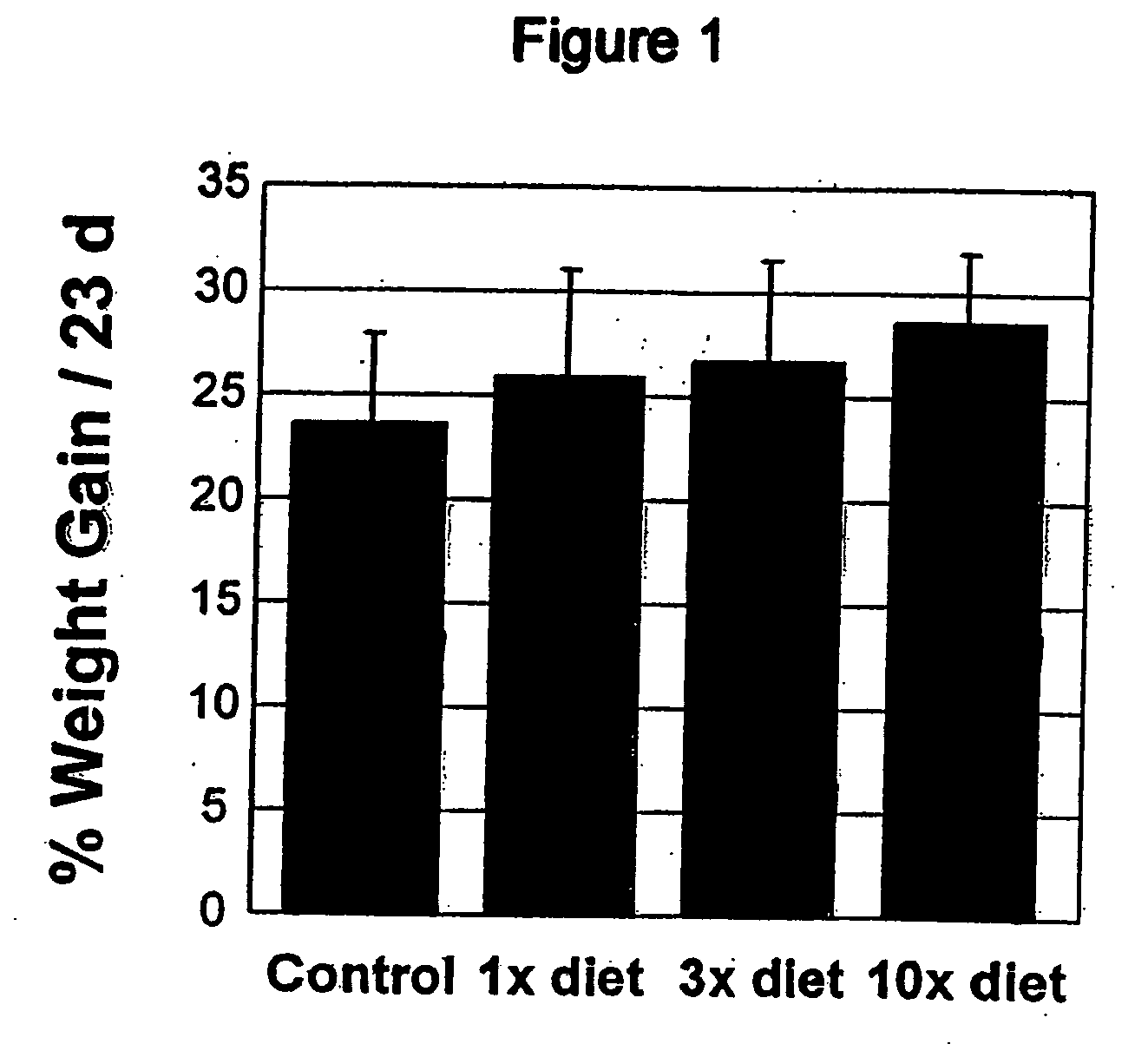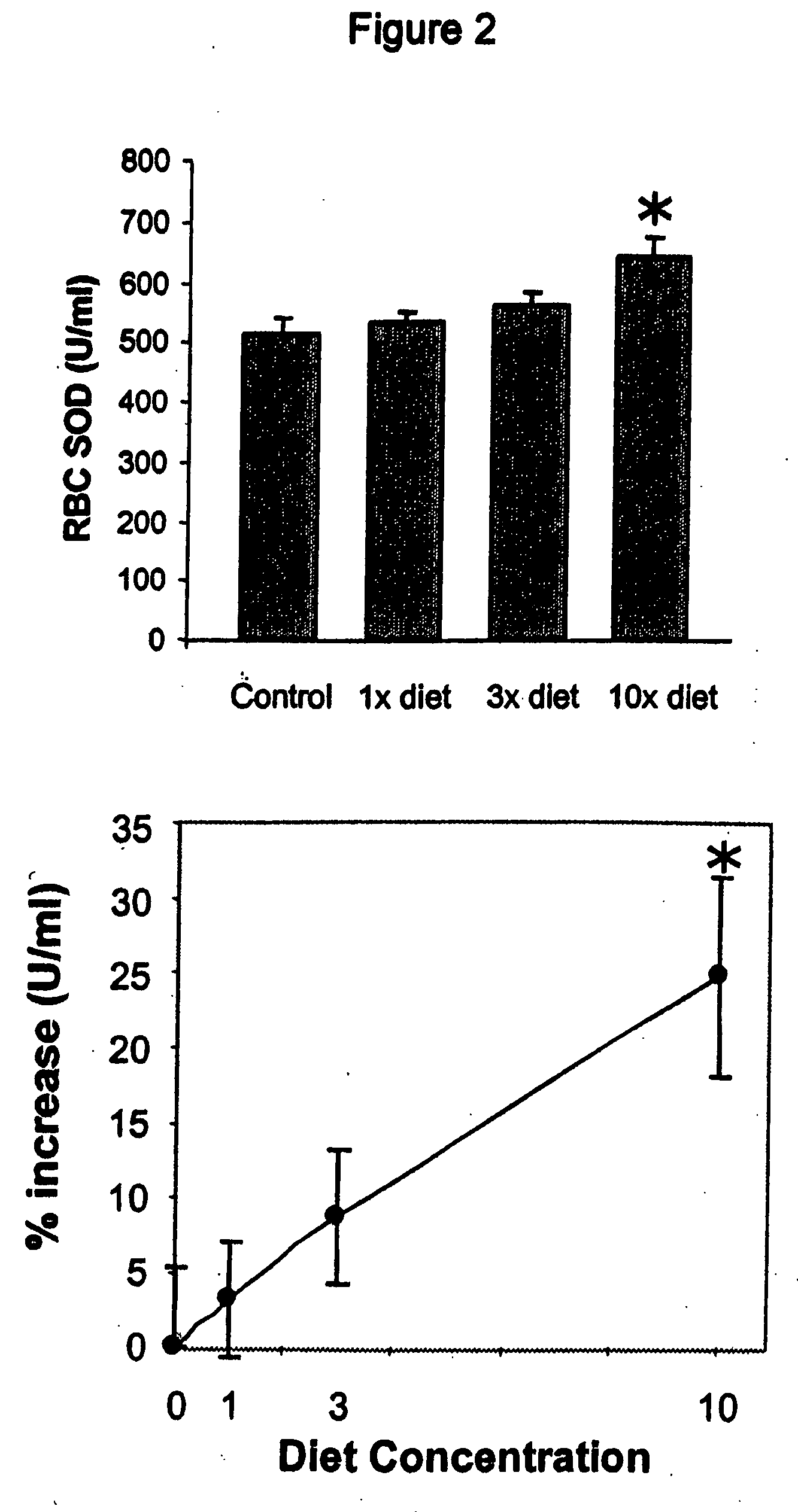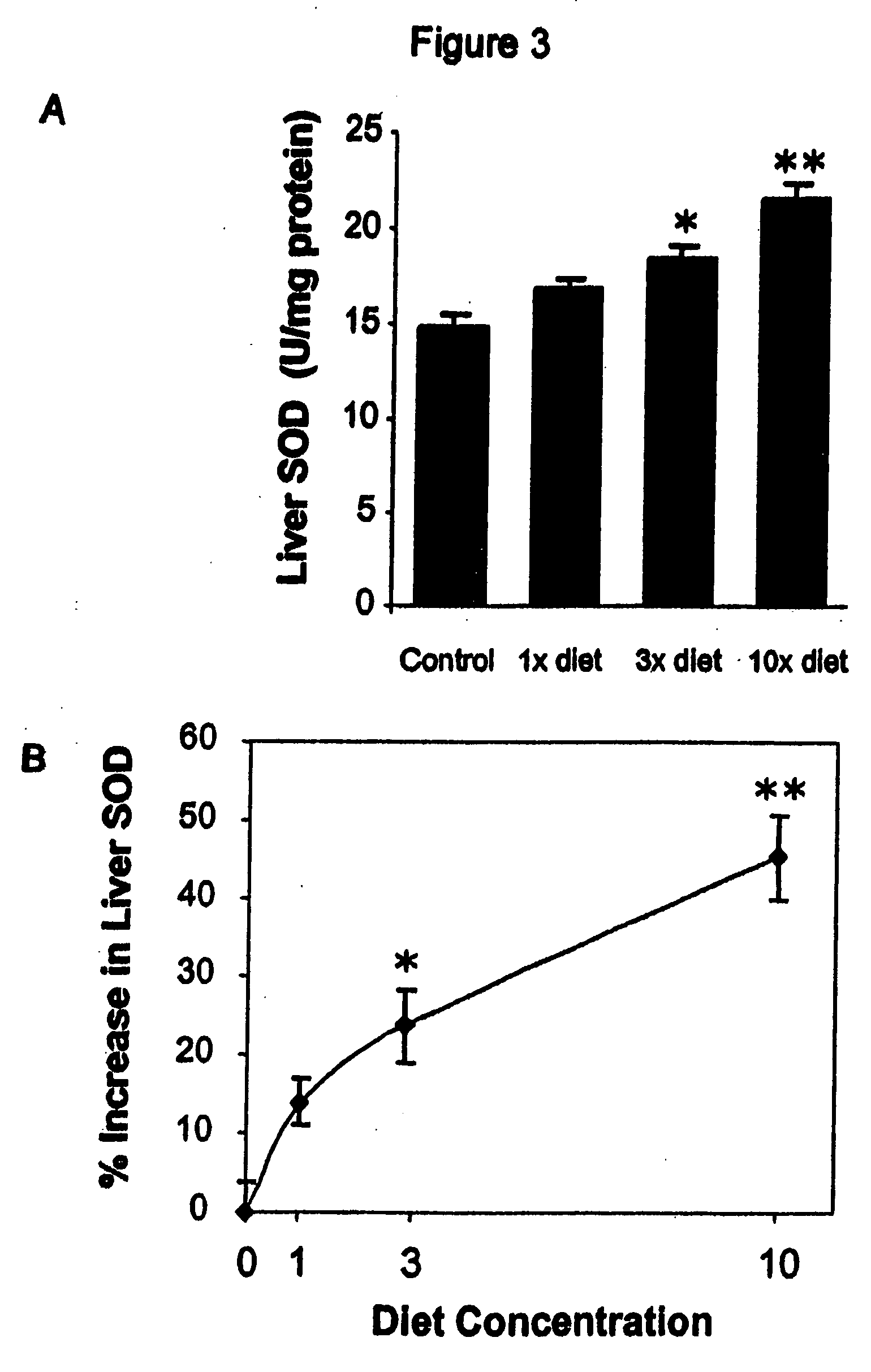Methods for enhancing antioxidant enzyme activity and reducing C-reactive protein levels
a technology of antioxidant enzymes and creactive proteins, which is applied in the field of compounds for alleviating inflammation and oxidative stress, can solve the problems of bringing the body out of balance, affecting the clinical use of patients, and affecting the effect of antioxidant potential, so as to increase the activity of at least, the effect of safe inducement in the subj
- Summary
- Abstract
- Description
- Claims
- Application Information
AI Technical Summary
Benefits of technology
Problems solved by technology
Method used
Image
Examples
example 1
HERBAL Compositions of the Invention Alter Antioxidant Enzymes and Decrease Lipid Peroxidation in Wild Type C57BL / 6J Mice
[0194] I. General Purpose and Study Design
[0195] The purpose of this study was to observe and effects of an herbal composition of the present invention on normal 4 week old wild type C57BL / 6J mice. The exemplary herbal composition, Protandim I, is a dietary supplement containing eight herbal extracts, including, B. monniera extract, Milk Thistle extract 70-80%, Ashwagandha powder, Turmeric extract 95% curcumin, Gotu kola powder, Aloe vera powder, Green tea (98% Polyphenols, 45% EGCG), and Ginko biloba leaf extract and specifically detailed below in Table 3.
TABLE 3Composition of Protandim I.Percent Weight TotalActive IngredientAmountActive IngredientsBacopa monniera extract, 45%150mg12.77bacosidesMilk Thistle extract, 70-80%275mg23.4silymarinAshwagandha powder150mg12.77Gotu kola power150mg12.77Turmeric extract, 95% curcumin75mg6.38Green tea 98% polyphenols, 45%...
example 2
Herbal Compositions of the Invention Alter Antioxidant Enzymes and Decreased Lipid Peroxidation in Human Subjects
[0222] I. General Purpose and Design of Study
[0223] The purpose of this study was to observe the effects of herbal compositions of the present invention on human subjects. An exemplary dietary supplement containing five herbal extracts, called Protandim II was administered to sixteen healthy human subjects ranging in age from 20 to 78 years old. The composition of Protandim II is shown below in Table 5.
TABLE 5Composition of Protandim II.Percent Weight TotalActive IngredientAmountActive IngredientsB. monniera extract, 45% Bacosides150mg22.2Milk Thistle extract, 70-80%225mg33.3SilymarinAshwagandha powder150mg22.2Turmeric extract, 95% Curcumin75mg11.1Green tea, 98% polyphenols, 45%75mg11.1EGCGTotal675mg99.9
[0224] Subjects were assigned to two groups as defined in Table 6.
TABLE 6Protandim II Dosing of Human SubjectsNo. ofAgeDaily supplement ofsubjectsrangeProtandim IIGr...
example 3
Herbal Compositions of the Invention Normalize Blood Pressure in Human Subjects
[0253] Hypertension has been recognized as a multi-factorial trait resulting from the effect of a combination of environmental and genetic factors, including excess dietary salt or alcohol intake, stress, age, genetics and family history, obesity, physical inactivity, as well as high saturated fat diet. During the past few years, however, a large amount of information has been collected on the vascular inflammation, indicating that inflammation may involve in the initiation as well as development of hypertension. Evidence from animal models as well as patients, have indicated that hypertension, an established major risk factor for coronary artery disease, has been suggested to exert pro-inflammatory actions through the increased expression of several mediators, including leukocyte adhesion molecules, chemokines, specific growth factors, heat shock proteins, endothelin-1, and angiotensin. Endothelial dysf...
PUM
| Property | Measurement | Unit |
|---|---|---|
| weight percent | aaaaa | aaaaa |
| weight percent | aaaaa | aaaaa |
| pH | aaaaa | aaaaa |
Abstract
Description
Claims
Application Information
 Login to View More
Login to View More - R&D
- Intellectual Property
- Life Sciences
- Materials
- Tech Scout
- Unparalleled Data Quality
- Higher Quality Content
- 60% Fewer Hallucinations
Browse by: Latest US Patents, China's latest patents, Technical Efficacy Thesaurus, Application Domain, Technology Topic, Popular Technical Reports.
© 2025 PatSnap. All rights reserved.Legal|Privacy policy|Modern Slavery Act Transparency Statement|Sitemap|About US| Contact US: help@patsnap.com



